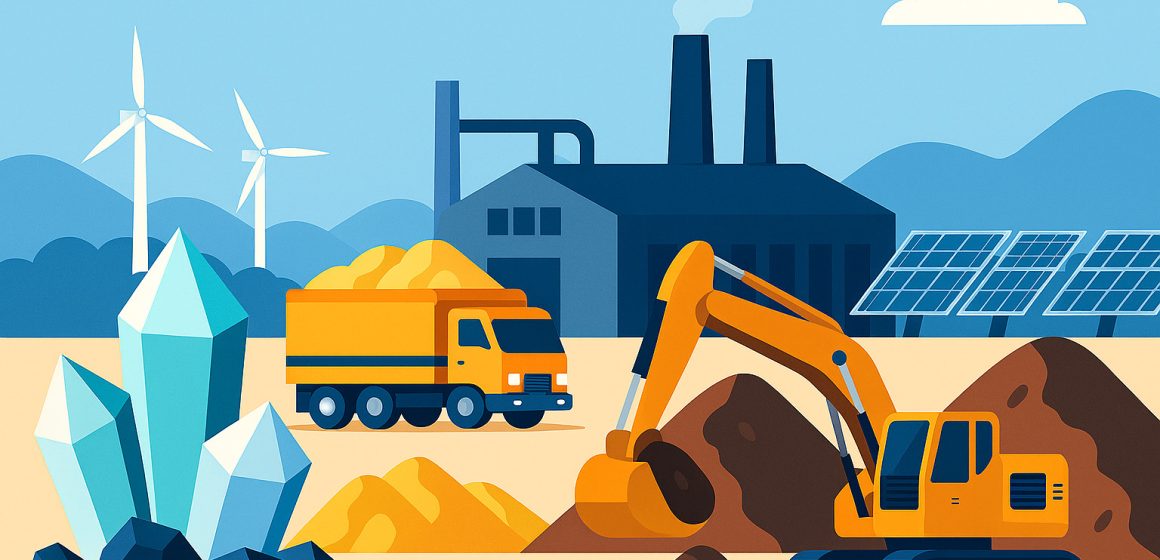This shift from a per-tonne basis to average sale price-linked rates reflects India’s intent to align royalty accruals with market price variations across mineral grades, while also reducing import dependency.
In a significant boost to India’s net zero targets, the Union Cabinet, chaired by Prime Minister Narendra Modi on Wednesday approved the rationalisation of royalty rates for four critical minerals—caesium, graphite, rubidium and zirconium—used in high-tech applications and clean energy technologies.
Caesium and rubidium will now be charged at 2 per cent of the average sale price (ASP) based on the metal content in the ore produced, while zirconium will attract a 1 per cent rate on the same basis. For graphite, the royalty will now be charged ad valorem—2 per cent for grades with 80 per cent or more fixed carbon, and 4 per cent for those with less than 80 per cent.
This shift from a per-tonne basis to average sale price-linked rates reflects the government’s intent to align royalty accruals with market price variations across mineral grades.
The decision is expected to promote the auction of mineral blocks containing caesium, rubidium and zirconium, thereby unlocking not only these minerals but also associated critical minerals found with them, including lithium, tungsten, rare earth elements (REEs), and niobium.
Graphite, caesium, rubidium and zirconium are vital for high-tech applications and energy transition. Graphite and zirconium are also among the 24 critical and strategic minerals listed in the Mines and Minerals (Development and Regulation) Act, 1957.
Under the Constitution’s Entry 54 of the Union List (List I, Seventh Schedule), this amendment does not require Parliamentary approval.
Speaking at a briefing following the decision, Ashwini Vaishnaw, Union Minister for Information and Broadcasting, said, “This reform will accelerate domestic exploration and production of critical minerals, strengthen India’s green energy value chain, and support strategic industries.”
Graphite is a crucial component in electric vehicle (EV) batteries, primarily serving as the anode material due to its high conductivity and charge capacity. India currently imports 60 per cent of its graphite requirement, primarily from China. At present, nine graphite mines are operational in the country, with another 27 blocks successfully auctioned.
Pushing Up Exploration
The Geological Survey of India (GSI) and Mineral Exploration and Consultancy Limited (MECL) have handed over 20 graphite blocks for auction after survey, with another 26 blocks under exploration.
Zirconium is a versatile metal used in nuclear energy, aerospace, healthcare and manufacturing, owing to its exceptional corrosion resistance and high temperature stability. Caesium is used in atomic clocks, GPS systems, high-precision instruments and cancer therapy. Rubidium finds application in specialty glasses for fibre optics, telecommunications and night vision devices.
Recently, the Central Government issued a Notice Inviting Tender (NIT) on September 16 under the sixth tranche of exploration for critical minerals. This includes five blocks of graphite, two blocks of rubidium and one block each of caesium and zirconium.
The Cabinet’s approval of royalty rates will help bidders submit rational financial bids during auctions. Graphite was previously the only mineral among the critical and strategic list whose royalty rate was specified on a per tonne basis since September 2014. The shift to ad valorem basis aligns graphite with other critical minerals, whose royalty rates typically range between 2 and 4 per cent.
Meanwhile, in a bid to reduce its dependence on China, government-owned companies such as NALCO are actively pursuing critical mineral mining in countries such as Australia, Argentina and Bolivia, with the acquisition of mineral blocks.
– Manish Pant


